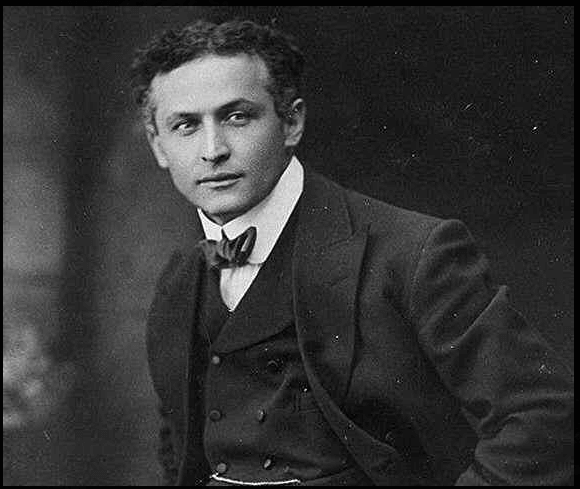Harry Houdini, known as a Hungarian magician and escapologist was one of the greatest stunt performers in the world. He was born in Budapest, Hungary but claimed in interviews from 1907 onwards that he was born in Appleton, Wisconsin on April 6, 1874. He immigrated with his family to the United States on July 3, 1878 (at the age of four) with his mother and four brothers. Houdini’s name was listed as Ehrich Weiss; friends called him Ehrie, or Harry.
On June 6, 1882 Harry’s father became an American Citizen, lost his tenure, and moved to New York City with Ehrich in 1887. The rest of the family joined the two when they found a more suitable and roomy place to live. Ehrich Weiss had many jobs as a young child and by the time he was ten years old he had made his public debut as a trapeze artist. Weiss became a professional magician and began calling himself “Harry Houdini” as he was influenced greatly by the French magician Jena Eugene Robert-Houdin.
Harry Houdini’s Beginning Career
Harry’s magic career started out slow, and he was very unsuccessful. He began by doing simple card tricks, but would soon start experimenting with escape acts. Harry and his brother would perform together and were known as “The Brothers Houdini.” During one of their performances Harry met his wife Wilhelmina Beatrice (Bess) Rahner. She would soon replace his brother and become his stage assistant for the rest of Houdini’s career. In 1899 Houdini met Martin Beck and would catch his big break. Beck was impressed with Houdini’s handcuffs act and told him he should focus on escape acts and not just the simple magician tricks. Within months of meeting Beck, Houdini was performing across the country; it was arranged that he would begin a European tour. Harry was a hit in Europe and traveled through England, Scotland, Germany, France, the Netherlands, and Russia. He became known as “The Handcuff King” and accumulated much wealth and success. The happiest day of his life as he claimed was when he was able to give his mother a dress made for Queen Victoria and present her to their family.
After his tour he returned to the United States and performed with huge amounts of success. For about three years he continued using handcuffs, chains, and ropes to entertain his audience. When they began to dwindle around 1908, he then began escaping from water-filled milk cans. The mere thought and possibility of death brought his audience back and he was a huge hit once again. In 1912 Houdini introduced his most famous act, the Chinese Water Torture Cell where he was suspended upside down in a locked glass and steel cabinet full of water.
He performed this act for the rest of his career and although it depicted that this is how he died, it really had nothing to do with his death at all. For most of his career, Houdini was one of the highest paid performers. In 1923 he became President of the Society of American Magicians and stayed in that position until 1926.
A Career in the Movie Industry
Despite his huge success as a magician, he also loved the movie industry. He made his first movie for Pathe’ in 1901 which featured many of his famous escapes, including the straitjacket escape. In 1916 he was offered a role in the movie 20,000 Leagues Under the Sea as Captain Nemo. It was a silent version of the movie, but never made it into production. In 1918 Harry Houdini signed a contract with film producer B.A. Rolfe to star in a fifteen part serial, The Master Mystery. It was a box office hit and this resulted in Houdini finding and signing with other producers, namely Famous Players-Lasky, Corporation/ Paramount Pictures. He made two pictures with them; The Grim Game, and Terror Island. After these two films were finished he moved back to New York and opened his own film production company called the “Houdini Picture Corporation.” His movie career would prove unsuccessful however, and in 1923 he gave up the movie business. Although he did receive a star on the Hollywood Walk of Fame.
Houdini’s Death
It is believed that Harry Houdini died of a ruptured appendix which was caused by multiple blows to his abdomen from a McGill University student by the name of J. Gordon Whitehead. It was said that Houdini was reclined on his couch after a performance when Whitehead came into the room and asked if it was true if Houdini could take any blow to the stomach. Houdini replied by saying yes and was followed by three consecutive blows to the abdomen before Houdini protested. Whitehead reportedly continued hitting Houdini several times afterwards and he acted as though he was in some pain. It was concluded that his death was due to this incident and his insurance company paid double indemnity. Houdini’s last performance was at the Garrick Theatre in Detroit Michigan on October 24, 1926. He had a fever of 104 degrees F and had been diagnosed with acute appendicitis. Refusing medical attention, Houdini died on October 31, 1926 at the age of fifty two. His legacy still lives today.


Leave a Reply